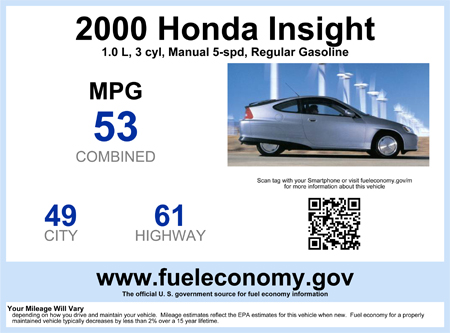
Fuel Economy Window Stickers for Used Cars
Fueleconomy.gov, the U.S. government’s official source for vehicle fuel economy estimates, has added a new tool to help used car buyers make informed fuel economy decisions. Until now, used car buyers, who outnumber new car buyers by 4 to 1, have not had the benefit of an official fuel economy window sticker.
Now, used car sellers can print a window sticker (www.fueleconomy.gov/feg/sticker.jsp) showing their vehicle’s EPA fuel economy estimate to display on their vehicle. The database supporting the new tool includes all vehicle models sold in the United States since 1984.
Consumers may not know that a vehicle’s fuel economy changes very little over the course of a typical 15-year life, provided it is properly maintained. As a result, the EPA fuel economy estimate remains a good indicator of a used vehicle’s average gas mileage.
The fueleconomy.gov used car window sticker shows the vehicle’s city, highway, and combined fuel economy rating, a photo of the vehicle and important information about the vehicle’s configuration—such as engine size, transmission type, and fuel type— to help identify it. For high-tech shoppers there’s a QR Code, scannable with a free downloadable app. The QR code links directly to the vehicle’s information on fueleconomy.gov’s mobile site, allowing the buyer to verify the information on the label and look up other data like annual fuel cost or GHG emissions. |